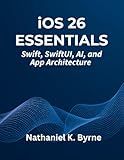Best SwiftUI Animation Delay Techniques to Buy in December 2025
In SwiftUI, you can delay an animation by using the animation modifier with a delay parameter. The animation modifier allows you to specify the duration and timing curve of the animation. To delay an animation, you can specify a delay value in seconds using the delay parameter.
For example, you can delay an animation by 1 second by adding the animation modifier with a delay parameter to the view modifier chain. This will cause the animation to start after the specified delay period.
struct ContentView: View { @State private var isAnimating = false
var body: some View {
Circle()
.fill(Color.blue)
.frame(width: 100, height: 100)
.scaleEffect(isAnimating ? 2 : 1)
.animation(.easeInOut(duration: 1).delay(1))
.onTapGesture {
self.isAnimating.toggle()
}
}
}
In this example, the scaleEffect animation will start after a 1-second delay when the circle is tapped. This allows you to control the timing of animations in SwiftUI and create more dynamic and interactive user interfaces.
What is the difference between delaying and duration in SwiftUI animations?
In SwiftUI animations, delaying refers to the amount of time that elapses before the animation begins. This allows you to create a pause or delay before the animation starts.
On the other hand, duration refers to the length of time that the animation takes to complete. This determines how quickly or slowly the animated changes are applied to the view.
In summary, delaying controls when the animation starts, while duration controls how long the animation lasts.
How to create a custom animation delay in SwiftUI?
To create a custom animation delay in SwiftUI, you can use the animation modifier along with the delay parameter. Here's an example of how you can create a custom animation delay:
struct ContentView: View { @State private var isAnimating = false
var body: some View {
Button(action: {
withAnimation(Animation.easeInOut(duration: 2).delay(1)) {
self.isAnimating.toggle()
}
}) {
Text("Animate")
.padding()
.background(Color.blue)
.foregroundColor(.white)
.cornerRadius(10)
}
.scaleEffect(isAnimating ? 2 : 1)
}
}
In this example, we have a button that when tapped, triggers an animation with a duration of 2 seconds and a delay of 1 second before starting. The scaleEffect modifier is used to scale the button when the animation is active.
You can customize the animation duration, delay, and easing curve by modifying the parameters of the Animation struct. By using the withAnimation function, you can specify the animation settings for a specific block of code.
What is the impact of delaying animations on performance in SwiftUI?
Delaying animations in SwiftUI can have a positive impact on performance, as animations can be resource-intensive and may slow down the rendering of views. By delaying animations or reducing the duration of animations, you can improve the overall performance and responsiveness of your app. Additionally, delaying animations can also help in creating a smoother and more polished user experience, as too many animations happening simultaneously can be overwhelming for the user. Overall, it is important to find a balance between adding animations for visual appeal and ensuring optimal performance for your SwiftUI app.



